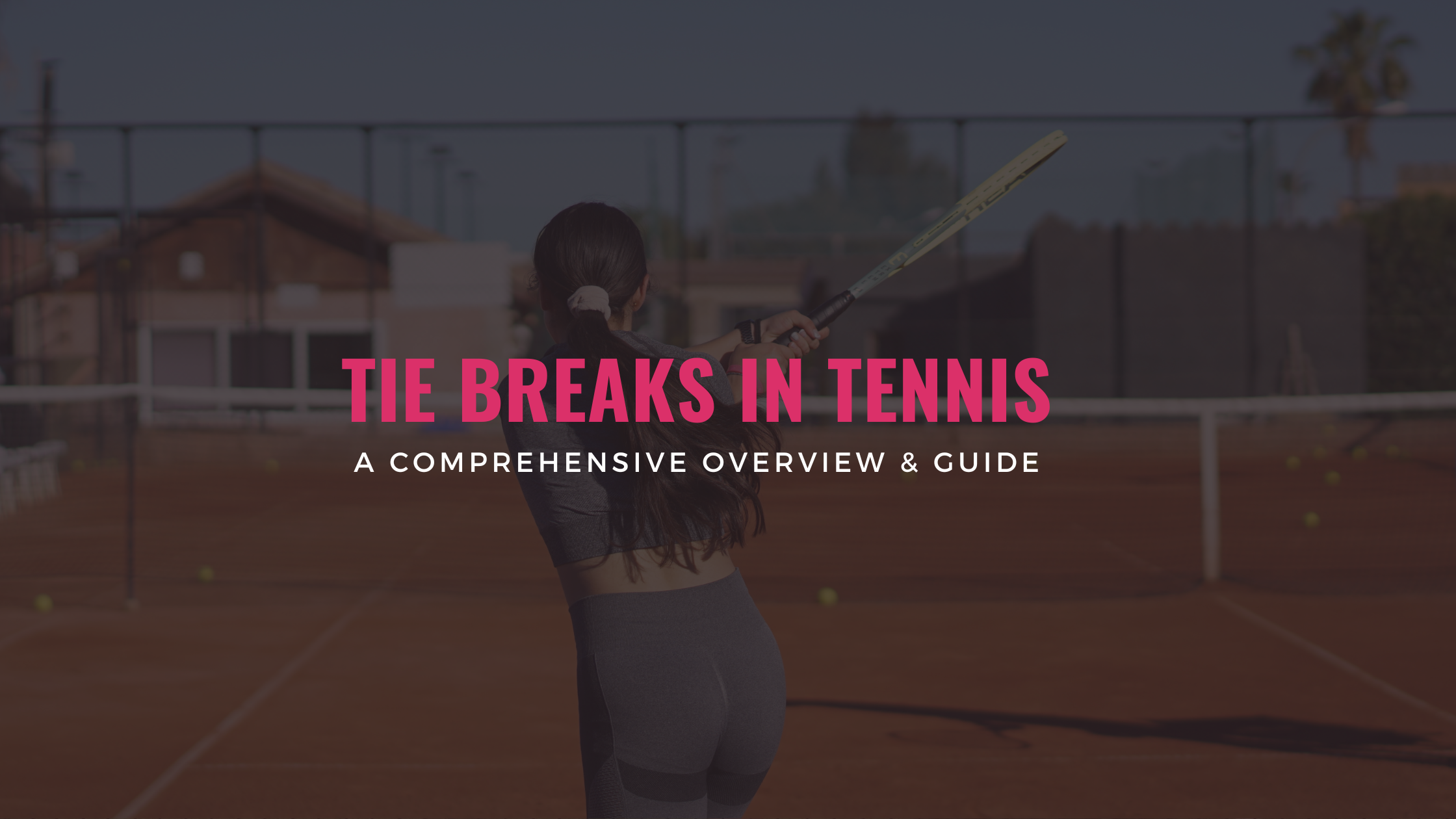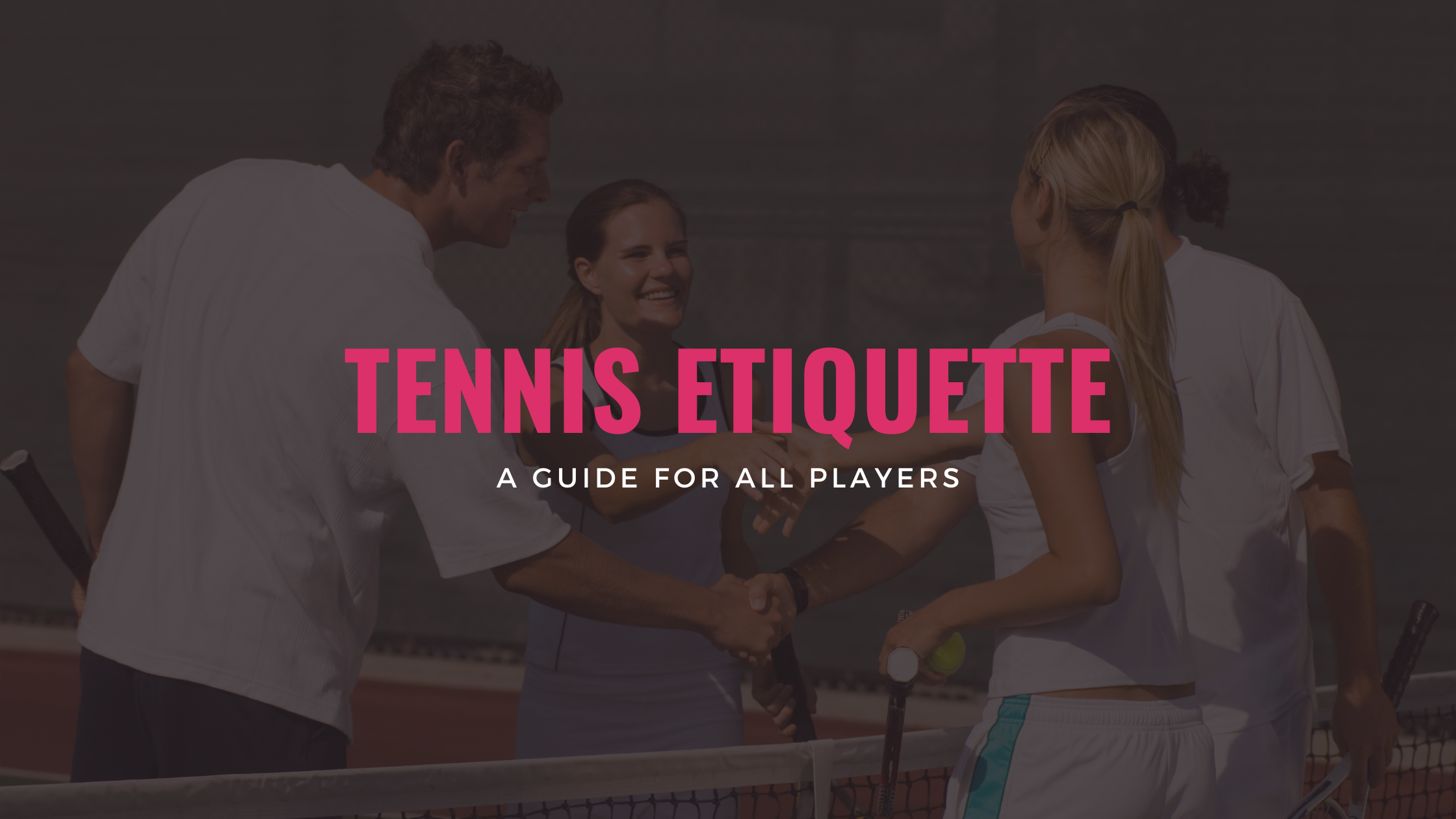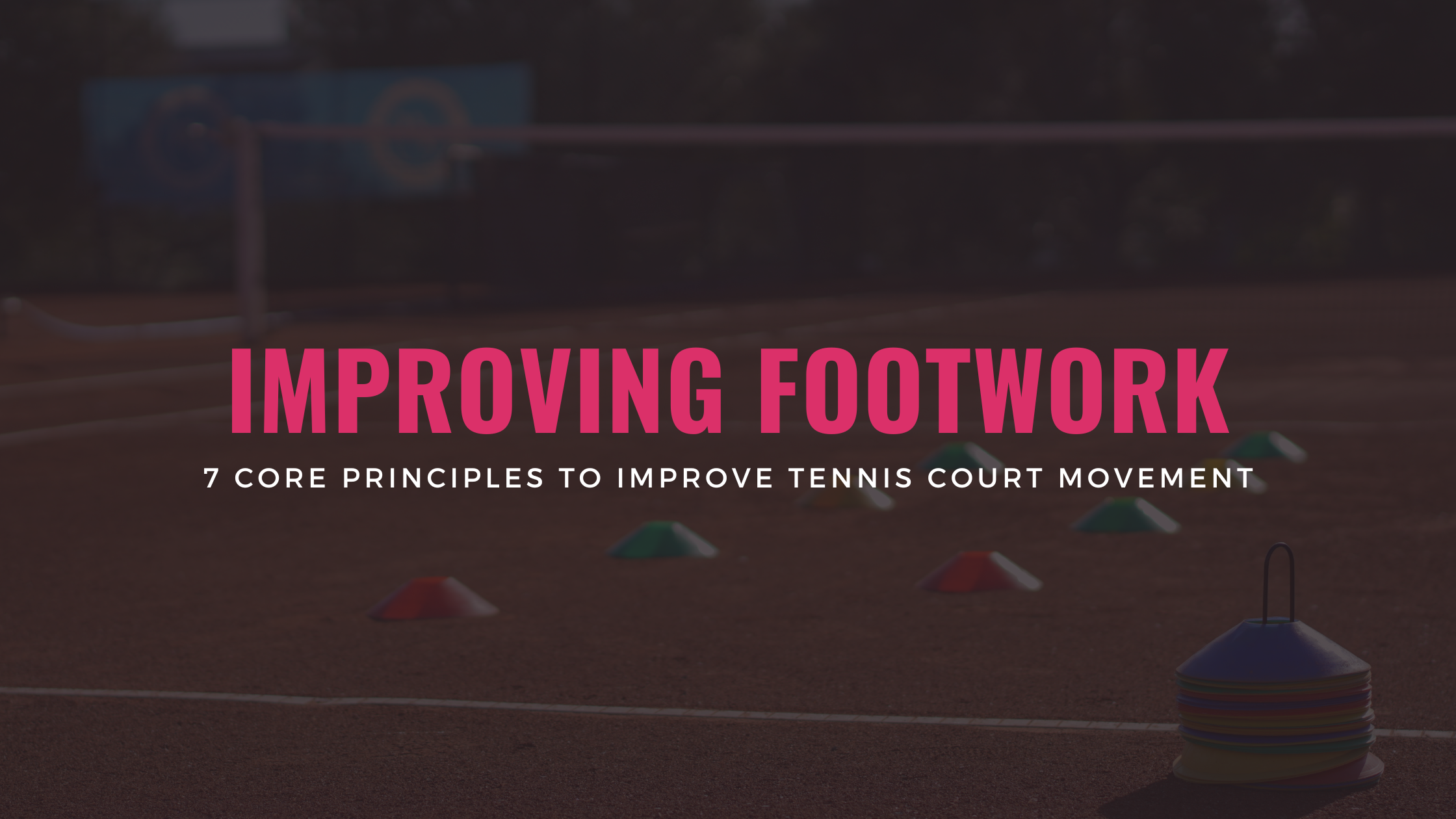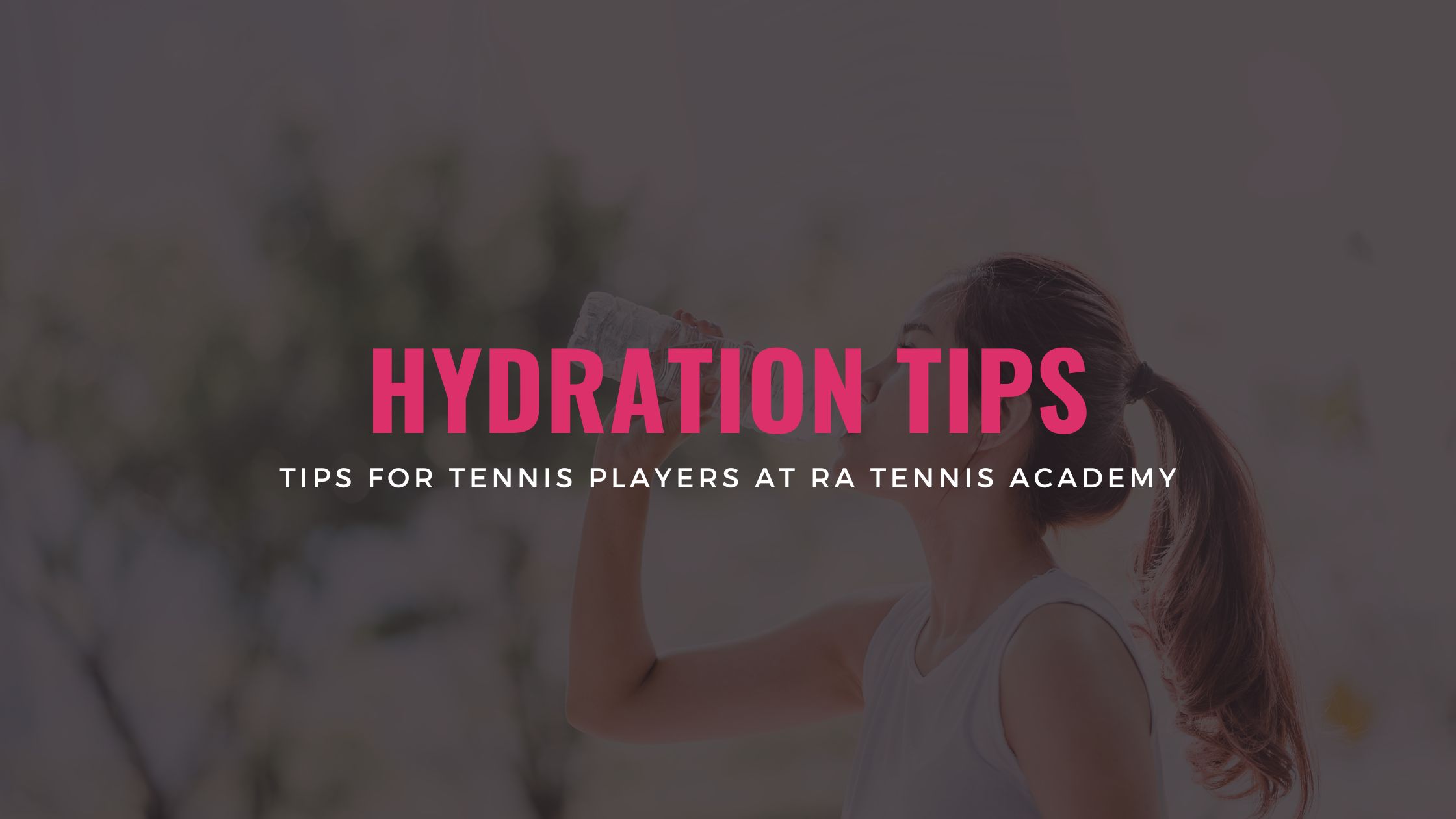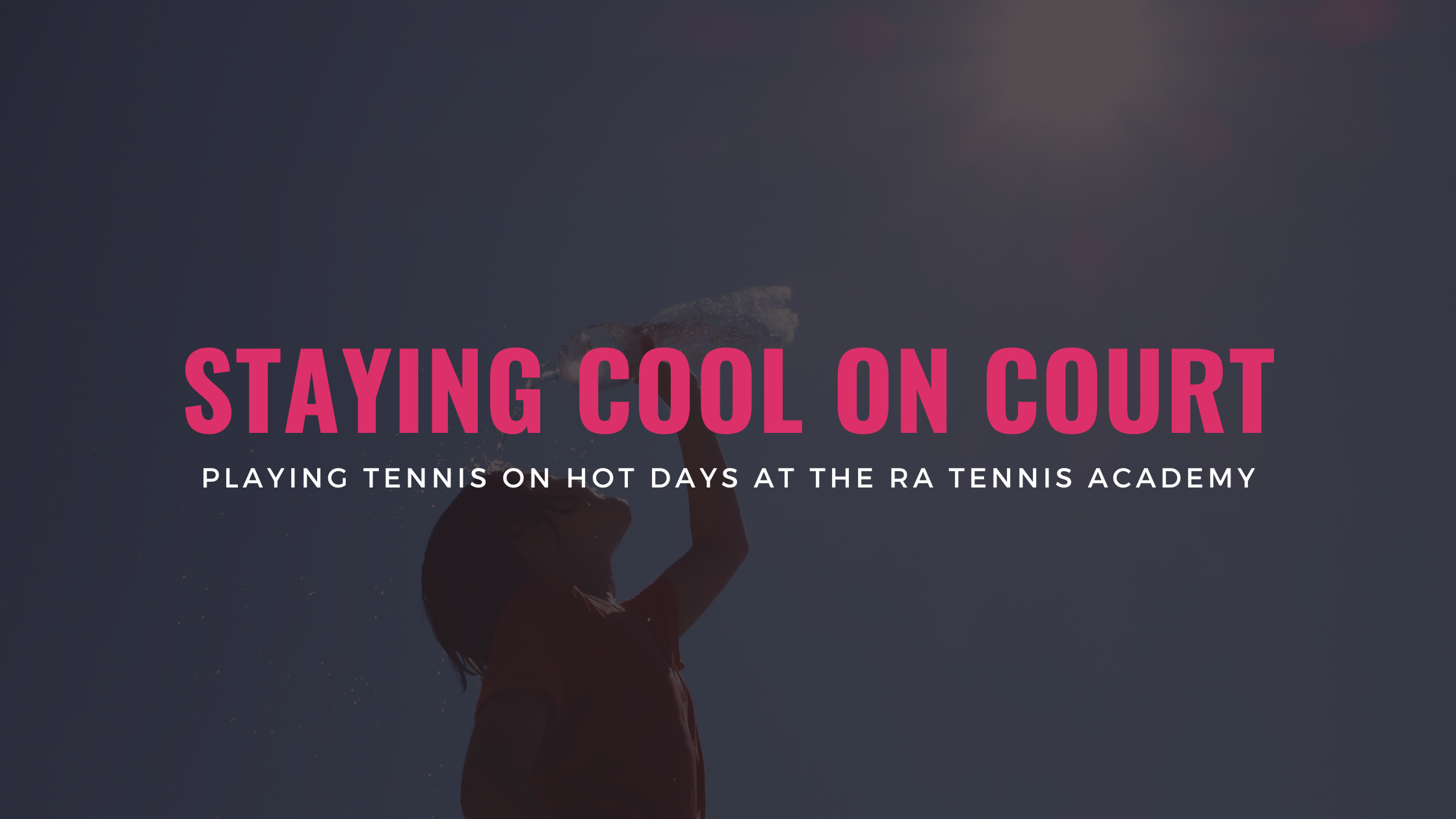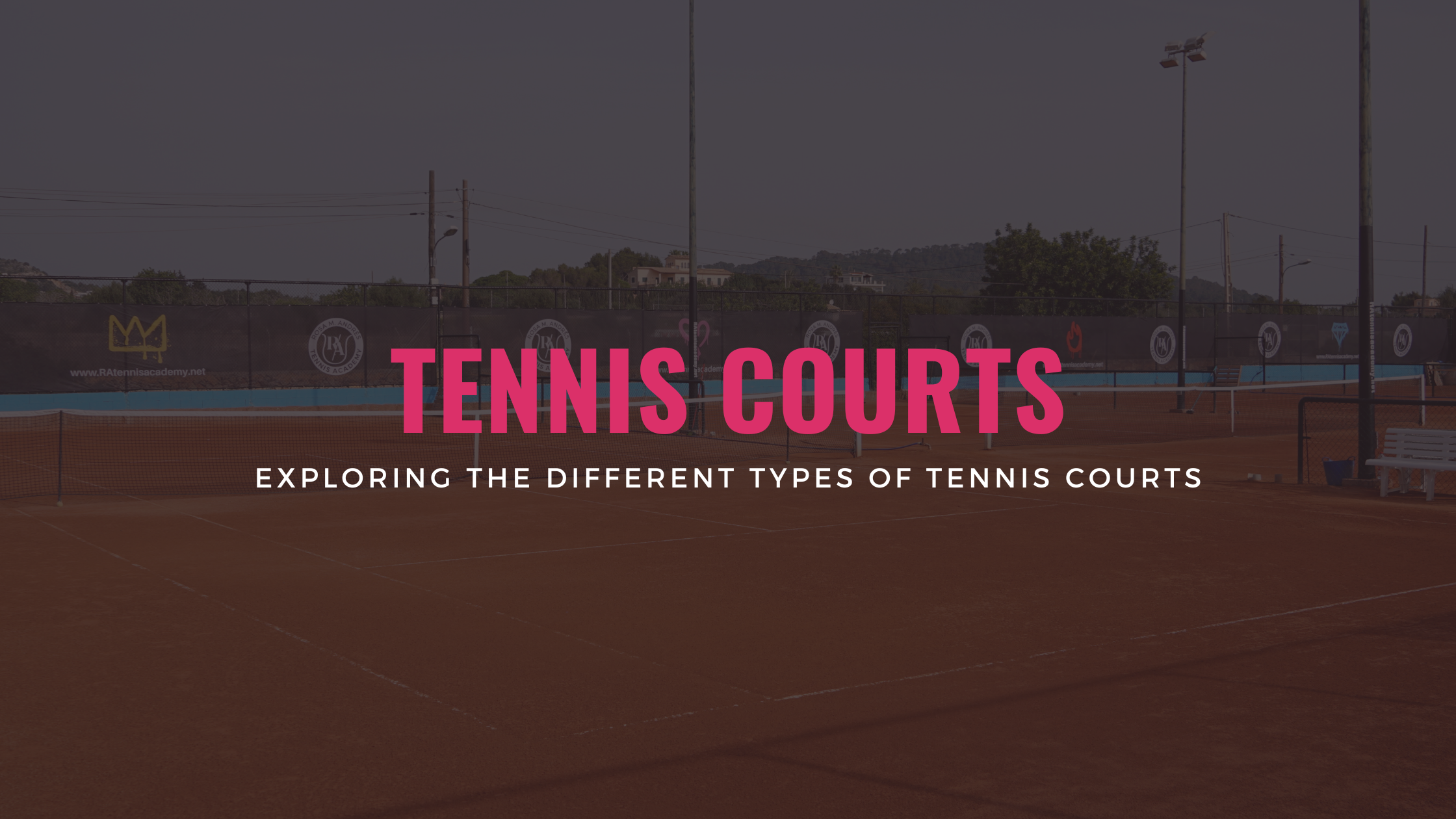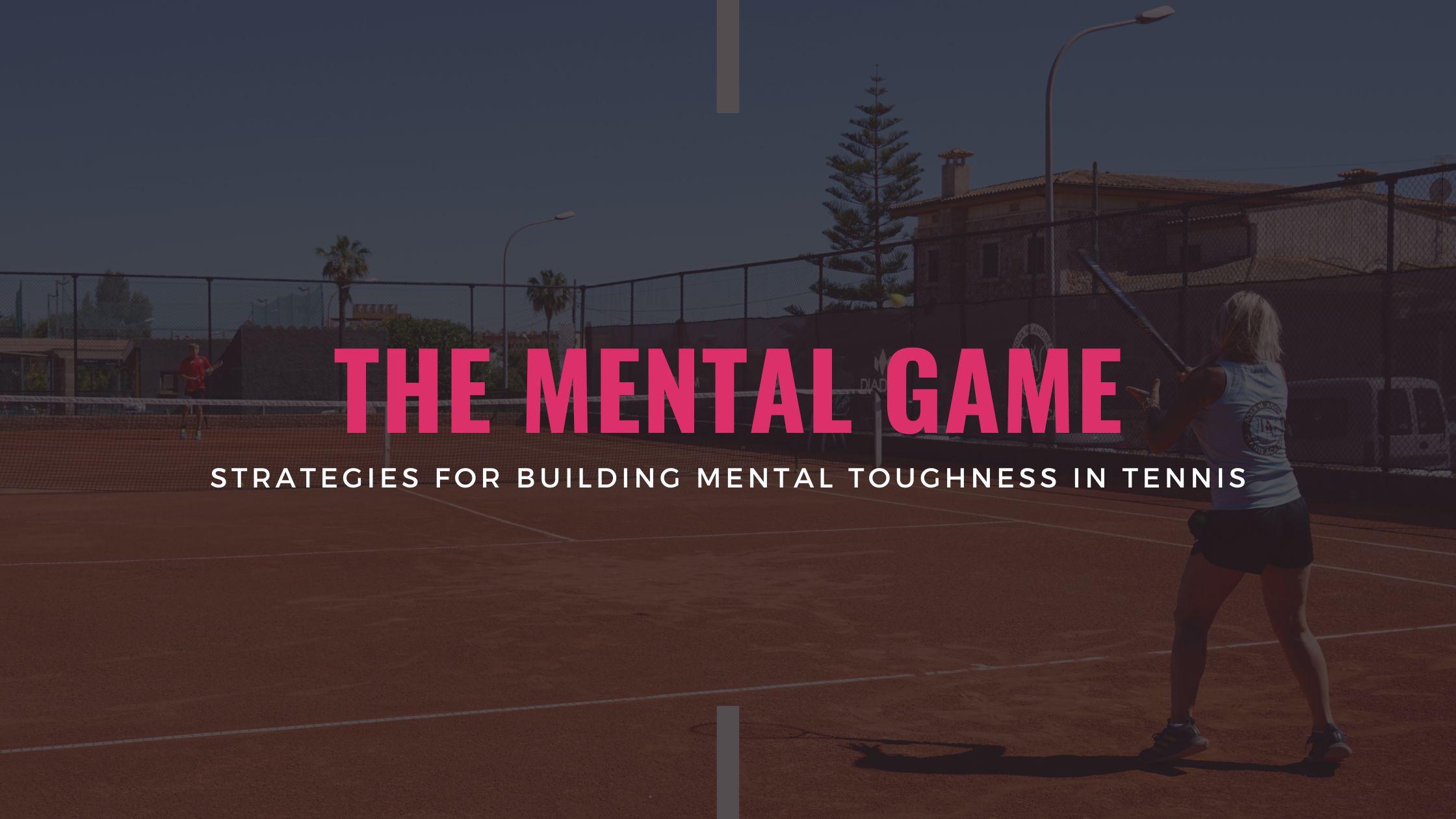Tie Breaks in Tennis
Tennis is a game filled with exciting moments, strategic gameplay, and a unique scoring system that keeps players and spectators engaged. Among the many intriguing aspects of tennis, one of the most thrilling situations is the tie break. Whether you're an aspiring tennis player or a dedicated fan, understanding tie breaks is crucial to appreciating the sport. In this blog post, we'll explore what a tie break is, how it's played, the difference between a regular tie break and a super tie break, and some important details to keep in mind. We’ll also touch on how we at the RA Tennis Academy teach and hone tie break strategies.
What is a Tie Break?
In tennis, a tie break occurs when players reach a stalemate in a set. Specifically, a tie break is played when the score reaches 6-6 in games. Normally, to win a set, a player must win at least six games and be ahead by two games. However, when the score reaches 6-6, the tie break system is used to determine the winner of the set without prolonging the match indefinitely.
The tie break is an intense and fast-paced part of the game, adding an extra layer of excitement and pressure for the players. It's no longer about gaining a two-game advantage but instead focuses on reaching a specific point total first.
How a Tie Break is Played
The tie break system in tennis works as follows:
- Starting the Tie Break: The player who was supposed to serve next in the normal sequence begins the tie break by serving one point. After that, the serve alternates every two points.
- Scoring in a Tie Break: Unlike regular tennis games, where the scoring is done in increments of 15, 30, and 40, the scoring in a tie break is straightforward. The first player to reach seven points wins the tie break, provided they lead by at least two points. For example, a player could win the tie break with a score of 7-5, but if the score is 6-6, play continues until one player gains a two-point lead (e.g., 8-6 or 10-8).
- Changing Ends: Players switch sides of the court every six points. This prevents either player from having a consistent advantage due to wind, sun, or any other external factors.
A tie break demands strong nerves, sharp reflexes, and precise shot-making. Players must maintain focus during every point, as one mistake can shift the momentum of the tie break dramatically. We play a lot of points at the RA Tennis Academy and place significant emphasis on training players to excel in tie break situations, as they often determine the outcome of close matches.
Differences Between a Regular Tie Break and a Super Tie Break
While a regular tie break is played when the score reaches 6-6 in a set, a super tie break is often used as a deciding factor in certain tennis formats, particularly in doubles matches and some lower-level tournaments. Here are the key differences between the two:
- Length: In a regular tie break, as mentioned earlier, the first player to reach seven points with a two-point margin wins the tie break. However, in a super tie break, the winner is the first player or team to reach ten points, again with at least a two-point lead.
- Usage: Super tie breaks are typically used in place of a full third set in matches that are tied at one set apiece. This is often seen in doubles matches or when time constraints are a concern. The super tie break adds an extra layer of excitement to the game, as it can provide a quicker resolution while still requiring players to perform under intense pressure.
- Strategy: While the rules of serving and alternating sides remain the same in a super tie break, the longer format means that players must be able to sustain their level of play for more points. It’s not uncommon for momentum to shift multiple times during a super tie break, so players must be prepared for a more prolonged and mentally challenging battle.
At the RA Tennis Academy, players are not only trained to master regular tie breaks but are also given specific strategies for excelling in super tie breaks. The academy’s training program ensures that players can handle the different psychological and physical demands of each format.
The Importance of Tie Breaks in Tennis
Tie breaks often act as a litmus test for a player's mental toughness and composure under pressure. Matches can hinge on a single moment of brilliance or error during a tie break, making them some of the most pivotal and memorable aspects of tennis. Players who can consistently win tie breaks demonstrate their ability to rise to the occasion when it matters most.
For professional players, tie breaks can make or break their success in a tournament. In Grand Slam events, where matches are often played over five sets, the ability to perform well in tie breaks becomes even more critical. On the other hand, in amateur and junior tournaments, players who excel in tie breaks can gain a significant competitive advantage over their peers.
At the RA Tennis Academy, tie break training is an essential component of player development. Coaches focus on both the mental and technical aspects of the tie break, teaching players how to stay calm, execute under pressure, and make the most of their opportunities. The academy’s players often find that their tie break performance improves dramatically with practice, leading to better overall match results.
Notable Tie Break Moments in Tennis History
Over the years, there have been countless memorable tie break moments in tennis. These moments have often defined matches, tournaments, and even players' careers.
One of the most famous tie breaks in history occurred during the 1980 Wimbledon final between Bjorn Borg and John McEnroe. In the fourth set of the match, McEnroe won a grueling 18-16 tie break to force a deciding fifth set. Although Borg ultimately won the match, that tie break is still considered one of the greatest in tennis history due to its drama and intensity.
Another unforgettable tie break occurred in the 2008 Wimbledon final between Roger Federer and Rafael Nadal. The match, often referred to as one of the greatest tennis matches of all time, featured several crucial tie breaks that added to the match's tension and excitement. Nadal eventually triumphed after an epic five-set battle, but the tie breaks were key in elevating the contest to legendary status.
Conclusion
Tie breaks are an integral part of tennis, adding drama, excitement, and unpredictability to matches. Whether you're playing at a competitive level or just watching from the stands, understanding the nuances of tie breaks can enhance your appreciation of the game. From the basic rules to the differences between regular and super tie breaks, knowing how to approach these intense moments is essential for success on the court.
For players aspiring to improve their tie break performance, comprehensive training like at our Tennis Academy can make a significant difference. By focusing on both the mental and physical aspects of tie breaks, the academy helps players develop the skills and confidence needed to excel when the pressure is at its highest.
As you continue to follow or participate in tennis, keep an eye out for those nail-biting tie breaks that can change the course of a match. These moments of intense competition are where champions are made and where the true beauty of tennis shines through.
Tennis Etiquette
Tennis is a sport of grace, skill, and strategy. But beyond the physical and mental demands of the game, tennis also requires players to adhere to a set of unwritten rules that embody respect and sportsmanship. These guidelines, often referred to as tennis etiquette, are essential for maintaining the integrity of the sport and ensuring a pleasant experience for all participants. Whether you are a seasoned player or just starting at a tennis academy like ours, understanding and practicing proper tennis etiquette is crucial. In this blog post, we'll explore the key aspects of tennis etiquette, covering everything from court manners to sportsmanship.
Introduction
Tennis etiquette is the cornerstone of the sport's culture. It's about showing respect for your opponents, partners, officials, and the game itself. While rules and regulations provide the framework for how tennis is played, etiquette ensures that the sport is conducted in a spirit of fairness and mutual respect. In this blog post we will delve into the various aspects of tennis etiquette, offering tips and insights that can help you become a more considerate and respected player. Whether you play for fun or train at a (any) tennis academy, these guidelines will enhance your tennis experience.
Respect for Your Opponents
One of the most important aspects of tennis etiquette is showing respect for your opponents. This begins before you even step onto the court. Here are some key points to consider:
Greeting Your Opponent
Start every match with a friendly handshake or a simple "good luck." This sets a positive tone for the game and shows that you appreciate the opportunity to compete. If you're playing at a tennis academy, this is also a great way to build rapport with fellow players.
Calling the Lines Fairly
In tennis, players are often responsible for making their own line calls. Always be honest and fair when calling the lines. If you are unsure whether a ball was in or out, give your opponent the benefit of the doubt. This demonstrates integrity and respect for the game.
Accepting the Umpire's Decisions
If an umpire is present, respect their decisions, even if you disagree. Arguing with officials is not only disrespectful but can also disrupt the flow of the match. Trust that the umpire is doing their best to make fair calls.
Court Manners
Proper court manners are essential for maintaining a smooth and enjoyable match. This section covers the dos and don'ts of behavior on the court.
Avoiding Distractions
When playing tennis, it's important to minimize distractions for your opponent. This includes avoiding loud noises, not moving during points, and ensuring that your cell phone is turned off. If you're training at a tennis academy, these habits are often emphasized to maintain a focused environment.
Retrieving Balls
Always retrieve balls that go out of play quickly and efficiently. This keeps the game moving and shows consideration for your opponent's time. When returning balls to your opponent, do so gently and aim for their racket or the side of the court.
Changing Ends
Players typically change ends of the court every two games. Do this promptly and without unnecessary delays. It's also polite to acknowledge your opponent with a nod or a brief comment as you pass by.
Sportsmanship
Good sportsmanship is at the heart of tennis etiquette. This means playing the game with a positive attitude, respecting your opponent, and handling victories and defeats with grace.
Celebrating and Commiserating
When you win a point, it's natural to feel excited, but avoid excessive celebrations that could be perceived as disrespectful. Similarly, if you lose a point, try to stay calm and composed. If you're playing at a tennis academy, coaches often stress the importance of maintaining a level head regardless of the outcome of individual points.
Shaking Hands
At the end of a match, always shake hands with your opponent, win or lose. This simple gesture signifies mutual respect and sportsmanship. If you're participating in a tournament at a tennis academy, this practice is especially important as it reflects on your character and sportsmanship.
Encouraging Fair Play
Encourage fair play by complimenting your opponent on good shots and acknowledging their effort. This creates a positive atmosphere and fosters camaraderie on the court.
Etiquette for Spectators
Spectators also play a crucial role in maintaining tennis etiquette. Whether you're watching a match at a local club or a professional tournament, there are certain guidelines to follow.
Staying Quiet During Points
Spectators should remain silent during points to allow players to concentrate. Applaud politely after points and avoid making noise that could distract the players. If you're at a tennis academy or a tournament like the RA Open in May watching a match, this rule is often emphasized to create a supportive environment for players.
Respecting the Players
Respect the players by not walking around during points or standing too close to the court. Wait for a changeover or a break in play to move around. This ensures that the players can focus without unnecessary interruptions.
Being a Good Role Model
As a spectator, you are a representative of the tennis community. Set a good example by following these etiquette guidelines and encouraging others to do the same. This helps to promote a positive and respectful atmosphere at tennis events.
Conclusion
Tennis etiquette is about more than just following rules; it's about embodying the spirit of the game and showing respect for everyone involved. By practicing proper etiquette, you can enhance your own experience and contribute to a positive environment for others. Whether you are playing for fun or training at a tennis academy, these guidelines are essential for becoming a respected member of the tennis community.
Thank you for reading our RA Tennis Academy guide on tennis etiquette. We hope you found it informative and useful. Do you have any experiences or additional tips on tennis etiquette? We'd love to hear from you! Please leave a comment below and join the conversation.
Improving Footwork and Court Movement
Improving footwork and court movement is crucial for any tennis player aiming to enhance their performance. Here's a breakdown of seven core principles to improve tennis footwork and court movement, along with my thoughts on each:
1. Balance and Stability
Maintaining balance and stability is fundamental. Proper stance and posture enable quick and efficient movement, reducing the risk of injury. Focusing on core strength and engaging in exercises like planks and balance drills can significantly improve a player's stability.
Thoughts: This principle is foundational as it affects all other aspects of footwork. Without good balance, executing swift and accurate movements becomes challenging.
2. Proper Foot Positioning
Correct foot positioning ensures efficient transitions and better shot execution. This involves aligning the feet appropriately for various strokes and maintaining a low center of gravity.
Thoughts: Emphasizing foot positioning helps players to be prepared for quick directional changes and improves their ability to react to opponents’ shots. Practicing different stances (open, closed, semi-open) based on shot requirements can be beneficial.
3. Quick First Step
A quick first step can make a significant difference in reaching the ball in time. This involves explosive movements and agility training to enhance reaction times.
Thoughts: Speed and agility drills, such as ladder drills and sprint intervals, are excellent for developing a rapid first step. This principle is critical for both offensive and defensive plays.
4. Footwork Patterns
Understanding and practicing specific footwork patterns for various shots (e.g., side steps, cross steps) ensures efficient movement around the court.
Thoughts: Footwork patterns are like the choreography of tennis. Regularly drilling these patterns helps in muscle memory development, making movements more instinctive during matches.
5. Anticipation and Reading the Game
Anticipating the opponent's shots and reading the game helps in positioning oneself better and moving efficiently. This involves studying the opponent's play style and predicting shot placements.
Thoughts: This principle combines mental and physical aspects of the game. Watching match footage and playing against a variety of opponents can enhance a player's anticipatory skills, leading to improved footwork.
6. Recovery Steps
Effective recovery steps after a shot ensure that a player is back in position and ready for the next shot. This involves efficient backpedaling and lateral movements.
Thoughts: Practicing recovery drills, such as shadow tennis, can significantly help. Recovery is often overlooked, but it is essential for maintaining a strong defensive position and being prepared for subsequent shots.
7. Consistency and Drills
Consistent practice and specific footwork drills are essential for ingraining these principles into a player’s game. This includes repetitive movement drills and simulated match play scenarios.
Thoughts: Consistency is key in tennis. Regularly incorporating footwork drills into training routines ensures continuous improvement and helps in internalizing these movements so they become second nature.
Summary
These seven core principles provide a comprehensive framework for enhancing tennis footwork and court movement. By focusing on balance, positioning, quickness, patterns, anticipation, recovery, and consistency, players can develop a solid foundation for effective court coverage and overall better performance. Regular practice, along with specific drills targeting each of these areas, will lead to significant improvements in a player’s game.
Keep at it!
HK
Hydration Tips
Playing tennis is not just about skill and strategy - it's also about maintaining peak physical condition to ensure you can give your best on the court. At the RA Tennis Academy, we emphasize the importance of hydration as a cornerstone of our training regimen. Taking small breaks between exercises to sip water is a simple yet effective way to stay hydrated, enhance performance, and safeguard your overall well being while performing on the courts.
The Importance of Hydration in Tennis
Tennis is a physically demanding sport that requires agility, endurance, and quick reflexes. During intense rallies and long matches, your body loses fluids through sweat, which can lead to dehydration if not replenished. Dehydration can impair your performance by causing fatigue, reducing coordination, and decreasing your ability to concentrate. In extreme cases (rare), it can lead to heat-related problems such as heat exhaustion or heat stroke.
Benefits of Staying Hydrated
- Improved Performance: Adequate hydration helps maintain your energy levels, enabling you to play at your best throughout the match.
- Enhanced Recovery: Staying hydrated helps your muscles recover more quickly after intense exercise, reducing soreness and the risk of injury.
- Better Focus: Proper hydration ensures that your brain stays sharp, improving your decision-making and reaction times.
- Temperature Regulation: Water helps regulate your body temperature, keeping you cool and preventing overheating.
Hydration Tips for Tennis Players
- Drink Before You’re Thirsty: Thirst is a late indicator of dehydration. Drink water regularly, even if you don’t feel thirsty, to stay ahead of dehydration.
- Small Sips, Often: Instead of gulping down large amounts of water at once, take small sips frequently. This is why at RA Tennis Academy, we take small breaks in between exercises for quick sips of water.
- Use Electrolytes: During long matches or training sessions, you lose electrolytes through sweat. Consider sports drinks that contain electrolytes to help maintain balance.
- Monitor Your Urine: A simple way to check your hydration level is by observing the color of your urine. Light yellow is a good indicator of proper hydration, while dark yellow or amber signals dehydration.
- Hydrate Before and After Play: Ensure you are well-hydrated before stepping onto the court and replenish fluids lost during play immediately after your session.
Hydration Breaks at RA Tennis Academy
At the RA Tennis Academy, we have integrated hydration into our training sessions to ensure our athletes perform at their best. Between exercises, our players take short hydration breaks to sip water. These breaks are strategically timed to prevent dehydration and keep energy levels high. By making hydration a habit, our players learn to listen to their bodies and understand the importance of maintaining fluid balance. WHile taking those breaks we encourage our players to also do small stretching exercises.
Conclusion
Hydration is a key component of athletic success, especially in a sport as demanding as tennis. By taking regular hydration breaks and staying mindful of your fluid intake, you can significantly improve your performance and overall well-being. At the RA Tennis Academy, we are committed to promoting healthy hydration habits, helping our athletes stay ahead in the game. Remember, staying hydrated is not just about drinking water - it's about enhancing your performance, recovery, and focus on and off the court. So, grab that water bottle and keep those sips coming!
Stay hydrated, play hard, and see you on the court!
Tips for Staying Cool on the Court
Playing tennis on hot days can be a challenging yet rewarding experience, especially when you're on vacation in beautiful destinations like Cala Millor, Mallorca. Whether you're a seasoned player or a tourist eager to enjoy some time on the court, staying cool is essential for both performance and health. At the RA Tennis Academy and Club, we understand the importance of keeping our players comfortable and safe in the heat. For example, starting next week we will changing our Academy schedule and starting at 18:00 rather than our usual time at 16:00.
That being said, here are some practical tips and advice to help you stay cool while playing tennis on hot days.
Understanding the Heat
Before diving into specific tips, it's crucial to understand why playing tennis in hot weather can be particularly taxing. Especially when on vacation, high temperatures can lead to heat exhaustion, dehydration, and sunburn, all of which can negatively impact your game and health. This is fairly straight forward, nonetheless many of us, while on vacation don't take this into account. In sports, the combination of physical exertion and exposure to the sun can quickly deplete your energy levels and lead to overheating if precautions are not taken.
So here are a few thoughts in regards to playing in the heat.
Dress for Success
Lightweight and Breathable Clothing
Choosing the right clothing is your first line of defense against the heat. Opt for lightweight, breathable fabrics like polyester or nylon, which wick away sweat and allow for better air circulation. Avoid cotton, as it tends to retain moisture, making you feel heavier and hotter. At the RA Tennis Academy, all our alumni receive a lightweight breathable fabric from Joma as a small thank you. Either way, we recommend gear from reputable sports brands that specialize in moisture-wicking technology.
Wear Light Colors
Light-colored clothing reflects, rather than absorbs, the sun’s rays. Whites, pastels, and light grays are excellent choices for staying cool. Dark colors, on the other hand, absorb more heat and can make you feel warmer.
Protective Accessories
- Hats and Visors: A wide-brimmed hat or visor can provide shade and keep the sun off your face.
- Sunglasses: Invest in a good pair of sunglasses with UV protection to shield your eyes from the sun's glare.
- UV-Protective Clothing: Consider wearing clothes with built-in UV protection. Many sports brands offer these to help prevent sunburns.
Hydration: The Key to Performance
Start Hydrating Early
Begin hydrating well before you step onto the court. Drink plenty of water in the hours leading up to your match. This will ensure that your body is well-hydrated from the start. This doesnt mean drinking a liter of water right before practice. This does mean start sipping on water in bit sized sips ca. 30 - 45min before practice starts.
Hydrate During the Game/Practice
Bring a large water bottle and sip regularly, even if you don't feel thirsty. In hot conditions, you can lose a significant amount of fluids through sweat. Drinking small amounts frequently is better than consuming large quantities infrequently.
Electrolyte Drinks
In addition to water, consider having an electrolyte drink to replenish the salts and minerals lost through sweat. Drinks containing sodium, potassium, and magnesium can help maintain your energy levels and prevent cramps.
Timing is Everything
Play Early or Late
If possible, schedule your matches for early morning or late evening when temperatures are cooler. Midday sun is the hottest and can make playing conditions uncomfortable, especially when it is all sunny.
Take Frequent Breaks
During your game, take regular breaks to rest and cool down. This is especially important if you're playing during the hotter parts of the day. Use the breaks to hydrate and find some shade. Our courts have umbrellas. Please use them and close them afterwards.
Cooling Techniques
Ice Towels
Bringing along a cooler with ice towels can be a game-changer. Place a towel on your neck or forehead during breaks to help lower your body temperature. Alternatively, who carries an ice towel around, utilize a small wet towel. Head to our bathrooms or showers, make it wet and place around your neck.
Cooling Vests
Cooling vests are another great option. These vests are designed to keep your core body temperature down and are especially useful in extreme heat. While they might not be a common part of your tennis gear, they can make a significant difference in maintaining your performance and comfort.
Portable Fans
Small, portable fans can provide a refreshing breeze during breaks. Battery-operated fans or those that can be attached to a water bottle for misting are excellent choices.
Adapt Your Game
Adjust Your Playing Style
In hot weather, it's essential to adapt your playing style to conserve energy. Focus on shorter rallies and try to end points quickly. Playing long, drawn-out rallies can lead to quicker exhaustion and overheating.
Take Advantage of the Shade
Whenever possible, position yourself in shaded areas of the court during breaks and changeovers. This small adjustment can help you cool down and recover faster. Our windbreakers, depending on the time of day, at times throw a shade on parts of the court. Utilize those aside from the umbrellas.
Slow Down the Pace
It's okay to play at a slower pace in extreme heat. Take your time between points and don't rush your serves. This will help you conserve energy and maintain a steady performance throughout the match.
Sunscreen
Choose the Right Sunscreen
Use a broad-spectrum sunscreen with an SPF of at least 30. Broad-spectrum sunscreens protect against both UVA and UVB rays, which are responsible for skin damage and sunburn.
Apply Generously and Frequently
Apply sunscreen generously at least 30 minutes before stepping out into the sun. Reapply every two hours, or more often if you're sweating heavily. Don't forget areas like the back of your neck, ears, and the tops of your feet if you're wearing sandals.
Nutrition for Hot Weather
Eat Light Meals
Heavy meals can make you feel sluggish, especially in the heat. Opt for lighter meals rich in fruits, vegetables, and lean proteins. Foods with high water content, such as watermelon, cucumbers, and oranges, can help keep you hydrated.
Avoid Caffeine and Alcohol
Both caffeine and alcohol can contribute to dehydration. Stick to water, electrolyte drinks, and natural juices to keep your hydration levels up.
Be Prepared: What to Bring
Essentials for Tourists
If you're a tourist visiting Cala Millor and don't have your gear, don't worry. Our Academy has you covered with rental equipment and on-site purchases. However, there are a few essentials you should consider bringing:
- Reusable Water Bottle: Having your water bottle allows you to stay hydrated throughout your session. Otherwise, we have ice cold water on site.
- Sunscreen: Pack your preferred brand and use it.
- Comfortable Clothing: Pack lightweight and breathable athletic wear suitable for hot weather.
Rent or Buy Equipment
We have equipment on site including balls and rackets as well as apparel - shorts, shirts, wristbands, caps and more. You can find everything you need to enjoy your game without compromising on comfort or performance.
After the Game: Recovery Tips
Cool Down Properly
A proper cool-down routine is crucial after playing in the heat. Spend a few minutes walking or doing gentle stretches to gradually lower your heart rate.
Rehydrate
Continue drinking water and electrolyte drinks after your game. This will help replenish any fluids lost during play.
Take a Cool Shower
A cool shower can help lower your body temperature and refresh you after a hot match. It also helps remove sweat and sunscreen residues from your skin. We have showers on site in both our male and female changing rooms.
Rest and Relax
Give your body time to recover. Avoid strenuous activities and relax in a cool, shaded area. This will help prevent heat-related illnesses and ensure you're ready for your next game.
Enjoying Your Tennis Experience in Cala Millor
Playing tennis in Cala Millor, Mallorca, at the RA Tennis Academy can be an unforgettable experience, especially when you know how to manage the heat. By following these tips, you can stay cool, hydrated, and safe while enjoying your time on the court. Whether you're a local or a tourist, our facilities are equipped to provide you with the best possible tennis experience, even on the hottest days.
Remember, preparation is key. Dress appropriately, stay hydrated, and listen to your body. With the right precautions, playing tennis in hot weather can be both enjoyable and rewarding. Visit RA Tennis Academy and Club in Cala Millor to make the most of your tennis adventures in Mallorca!
Tips for Playing on Each Surface
Tennis, a game of skill, strategy, and agility, is also deeply influenced by the surface it is played on. Each type of tennis court presents unique challenges and opportunities, shaping how players approach the game. Whether you're playing on the sun-kissed clay courts of our Academy & Club in Cala Millor in Mallorca or the hard courts of a local club in the area, understanding the nuances of each surface can elevate your game. In this post we want to dive into the different types of courts and give a few tips for each of them. Let us know in the comments below what your thoughts are.
Types of Tennis Courts
- Clay Courts
- Hard Courts
- Grass Courts
- Carpet Courts
Clay Courts: The Heart of Cala Millor's RA Tennis Academy & Club
At the RA Tennis Academy in Cala Millor, Mallorca, we pride ourselves on our six premium clay courts. Clay courts are beloved for their slower pace and high bounce, making them ideal for baseline players who excel in long rallies.
Playing on Clay Courts:
- Movement: Players need to master sliding into shots, which can help maintain balance and reach difficult balls. Sliding effectively can reduce the risk of injuries. Hence, practice getting into your knees (house down) and maintaining a good center of gravity.
- Strategy: Due to the slower surface, patience is key. Building points through careful shot selection and consistency often outweighs aggressive shot-making.
- Topspin: High topspin shots are particularly effective on clay, as the surface accentuates the spin, making the ball bounce higher and more unpredictably for your opponent. Give it a try.
Considerations for Clay Courts:
- Footwear: Use clay court-specific shoes with a herringbone tread pattern to improve grip and facilitate sliding. It's important to wear the right shoes on the court especially if your playing intensively. If your just here for a leisure holiday and don't have any shoes with you, then just be cautious of the surface.
- Stamina: Matches on clay can be longer, so conditioning and endurance are crucial.
Hard Courts: Versatile and Popular
Hard courts are the most common type of tennis court, used in many major tournaments including the US Open and the Australian Open. They offer a good balance of speed and bounce. While we do not have any hard courts available at the moment, you never know what the future may bring.
Playing on Hard Courts:
- Movement: Hard courts provide predictable bounces, allowing for precise footwork and positioning. Quick lateral movements and sprints are essential.
- Strategy: Players can mix up their game with a balance of power and finesse. Both baseline and net play can be effective.
- Shot Variety: Hard courts are ideal for utilizing a wide range of shots, from powerful serves and ground strokes to delicate drop shots and volleys. (Again, only suggestions)
Considerations for Hard Courts:
- Footwear: Choose durable tennis shoes with good cushioning to protect against the hard surface. Your knees and ankles will thank you.
- Injury Prevention: The hard surface can be tough on joints, so proper warm-up and stretching are vital.
Grass Courts: Tradition and Speed
Grass courts are synonymous with tradition and prestige, epitomized by Wimbledon. They are the fastest of all tennis surfaces, providing a low bounce and favoring serve-and-volley players.
Playing on Grass Courts:
- Movement: Grass courts can be slippery, so quick, short steps and a low center of gravity help maintain balance. (an exercise we do at the Academy to remind our juniors to stay low is "house down")
- Strategy: Aggressive play is often rewarded. Serving and volleying, as well as slicing, can be very effective due to the low bounce.
- Adaptability: Players need to adapt quickly to the unpredictable bounces and faster pace.
Considerations for Grass Courts:
- Footwear: Use grass-specific shoes with nubs for better traction.
- Surface Maintenance: Grass requires regular maintenance, so always check for uneven spots that might affect the ball's bounce.
Carpet Courts: Indoor Advantage
Carpet courts are less common but offer a unique playing experience, typically found indoors and in countries where the weather is not as sunny as in Mallorca. They provide a medium-fast surface with a consistent, low bounce.
Playing on Carpet Courts:
- Movement: Quick footwork and agility are crucial as the ball tends to stay low and fast.
- Strategy: A balanced approach works well, with an emphasis on precise serving and quick net approaches.
- Comfort: Carpet surfaces are gentler on the joints compared to hard courts.
Considerations for Carpet Courts:
- Footwear: Opt for non-marking shoes to avoid damaging the surface.
- Surface Familiarity: Spend time adjusting to the speed and bounce if you’re more accustomed to outdoor courts.
Tips for Transitioning Between Court Types
- Adapt Your Game: Recognize that each surface requires a different style of play. Flexibility and adaptability are your greatest assets.
- Practice: Spend time on each type of court to get a feel for the unique characteristics. This will improve your overall game and prepare you for various playing conditions - noting that most courts you'll probably play on is hard surface or clay.
- Conditioning: Tailor your fitness regime to account for the demands of each surface. For instance, work on endurance for clay and quick sprints for grass.
Embrace the Variety
Whether you’re honing your skills at our Academy’s clay courts in Cala Millor, Mallorca, or competing on a hard, grass, or carpet court, understanding the distinct features of each surface can significantly enhance your performance. Embrace the variety and let each surface sharpen different aspects of your game, making you a more versatile and formidable player on any court.
At RA Tennis Academy, we encourage our players to embrace the unique challenges of clay courts and develop their game through dedicated practice and expert coaching. Join us in Cala Millor and experience the joy of playing tennis on amazing clay courts under the beautiful Mallorcan sun.
The Mental Game: Strategies for Building Mental Toughness in Tennis
Tennis, often called a sport of the mind, requires not only physical agility and skill but also a high degree of mental toughness. Over the past few months I have come to notice that while physical training and technique are crucial, the psychological aspect of tennis can be the determining factor between winning and losing, especially in high-pressure situations – regardless of age. That may sound very straight forward, however, most people still do not understand the full concept of the mental game, hence, this brief article delves into the psychological components of tennis and offers a few of my strategies to enhance mental resilience for players at all levels.
Understanding the Psychological Aspects of Tennis
The Mental Demands of Tennis
Tennis is unique in its mental demands due to several factors:
- Isolation: Unlike team sports, tennis players are alone on the court. This solitude can amplify stress and pressure, requiring players to self-manage their emotions and strategies.
- Unpredictability: Each match presents a new opponent with unique playing styles, requiring adaptability and quick strategic thinking. (Regardless of skill level – better/worse)
- Endurance: Matches can be lengthy, demanding sustained concentration and resilience over extended periods.
- Immediate Feedback: The score changes with every point, providing constant feedback and necessitating rapid emotional regulation and mental adjustments.
Key Psychological Skills in Tennis
To succeed in tennis, I find that players need to develop several psychological skills:
- Concentration: The ability to focus on the task at hand, ignoring distractions. (for example: parents outside yelling in on the court)
- Confidence: Belief in one’s abilities to perform under pressure. (Not arrogance)
- Emotional Control: Managing emotions such as anger, frustration, and anxiety.
- Motivation: Maintaining drive and persistence, especially during challenging phases of a match.
Strategies for Building Mental Toughness
1. Visualization and Imagery
Visualization involves creating mental images of successful performance. This technique can help players prepare for matches by mentally rehearsing strokes, strategies, and coping with potential challenges. Studies have shown that visualization can enhance confidence and improve performance under pressure.
How to Practice Visualization? Here a few of my techniques.
- Daily Routine: Spend a few minutes each day visualizing different aspects of your game.
- Detail Oriented: Include specific details such as the court, your opponent, and your feelings during the match.
- Positive Imagery: Focus on successful shots and scenarios to build a positive mindset.
2. Mindfulness and Meditation
Mindfulness practices can help players stay present and focused, reducing the impact of negative thoughts and anxiety. Meditation, in particular, has been shown to improve attention and emotional regulation. My wife recently showed me a video of I believe Iga Świątek laying on the floor staring at a swinging ball.
How to Practice Mindfulness?
- Breathing Exercises: Use deep breathing techniques to calm the mind before and during matches.
- Mindfulness Meditation: Set aside time daily for meditation to enhance overall mental clarity and focus.
3. Goal Setting
Setting specific, achievable goals can boost motivation and provide direction. Both short-term and long-term goals are essential for continuous improvement and maintaining motivation.
How to Set Effective Goals?
- SMART Goals: Ensure goals are Specific, Measurable, Achievable, Relevant, and Time-bound. (Something I’ve pulled out of the business world that can still apply to tennis)
- Process-Oriented Goals: Focus on improving specific aspects of your game (e.g., improving first-serve percentage) rather than only outcome goals (e.g., winning a tournament). This is crucial, especially during training.
4. Positive Self-Talk
Positive self-talk can significantly impact a player’s confidence and performance. Encouraging oneself through affirmations and constructive inner dialogue can help maintain a positive attitude, even during set-backs .
How to Develop Positive Self-Talk?
- Affirmations: Create a list of positive statements about your abilities and repeat them regularly. This does not mean for you to become egocentric, this means building on your capabilities.
- Counter Negative Thoughts: Identify negative thoughts and actively replace them with positive alternatives.
5. Routine and Rituals
Pre-match and in-match routines can provide a sense of control and reduce anxiety. These routines can include physical warm-ups, mental preparations, and specific rituals between points. You need to develop this – going from creating that recurring habit to making “your thing” a ritual. Most don’t do this.
How to Establish Effective Routines?
- Consistent Warm-Up: Develop a consistent pre-match warm-up routine to prepare both physically and mentally.
- In-Match Rituals: Use consistent actions between points, such as bouncing the ball a certain number of times before serving, to maintain focus and composure.
6. Stress Management Techniques
Learning to manage stress effectively is crucial for maintaining performance under pressure. Techniques such as progressive muscle relaxation and controlled breathing can help reduce tension.
How to Practice Stress Management?
- Progressive Muscle Relaxation: Practice tensing and then relaxing different muscle groups to release physical tension.
- Controlled Breathing: Use deep, rhythmic breathing to calm the mind and body during high-stress moments.
7. Developing a Growth Mindset
Adopting a growth mindset, the belief that abilities can be developed through dedication and hard work, can enhance resilience. This mindset encourages players to view challenges as opportunities for growth rather than threats.
How to Foster a Growth Mindset?
- Embrace Challenges: View difficult matches and training sessions as opportunities to improve.
- Learn from Failure: Analyze losses and mistakes to identify areas for improvement rather than seeing them as setbacks.
Building mental toughness in tennis is an ongoing process that requires dedication and practice. By incorporating strategies such as visualization, mindfulness, goal setting, positive self-talk, and stress management, you can enhance their mental resilience – trust me, I do the same. Developing these psychological skills will not only improve performance on the court but also contribute to personal growth and overall well-being. As with any aspect of training, consistency is key – regularly practicing these techniques will help you build the mental fortitude needed to succeed in the demanding and dynamic world of tennis.
- Morris, T., Spittle, M., & Watt, A. P. (2005). Imagery in Sport. Human Kinetics.
- Cumming, J., & Ramsey, R. (2009). Imagery interventions in sport. Advances in Applied Sport Psychology: A Review.
- Kabat-Zinn, J. (2005). Wherever You Go, There You Are: Mindfulness Meditation in Everyday Life. Hachette Books.
- Gardner, F. L., & Moore, Z. E. (2007). The Psychology of Enhancing Human Performance: The Mindfulness-Acceptance-Commitment (MAC) Approach. Springer Publishing Company.
- Hardy, J. (2006). Speaking clearly: A critical review of the self-talk literature. Psychology of Sport and Exercise, 7(1), 81-97.
- Weinberg, R., & Gould, D. (2014). Foundations of Sport and Exercise Psychology. Human Kinetics.
- Dweck, C. S. (2006). Mindset: The New Psychology of Success. Random House.
- Duckworth, A. (2016). Grit: The Power of Passion and Perseverance. Scribner.

